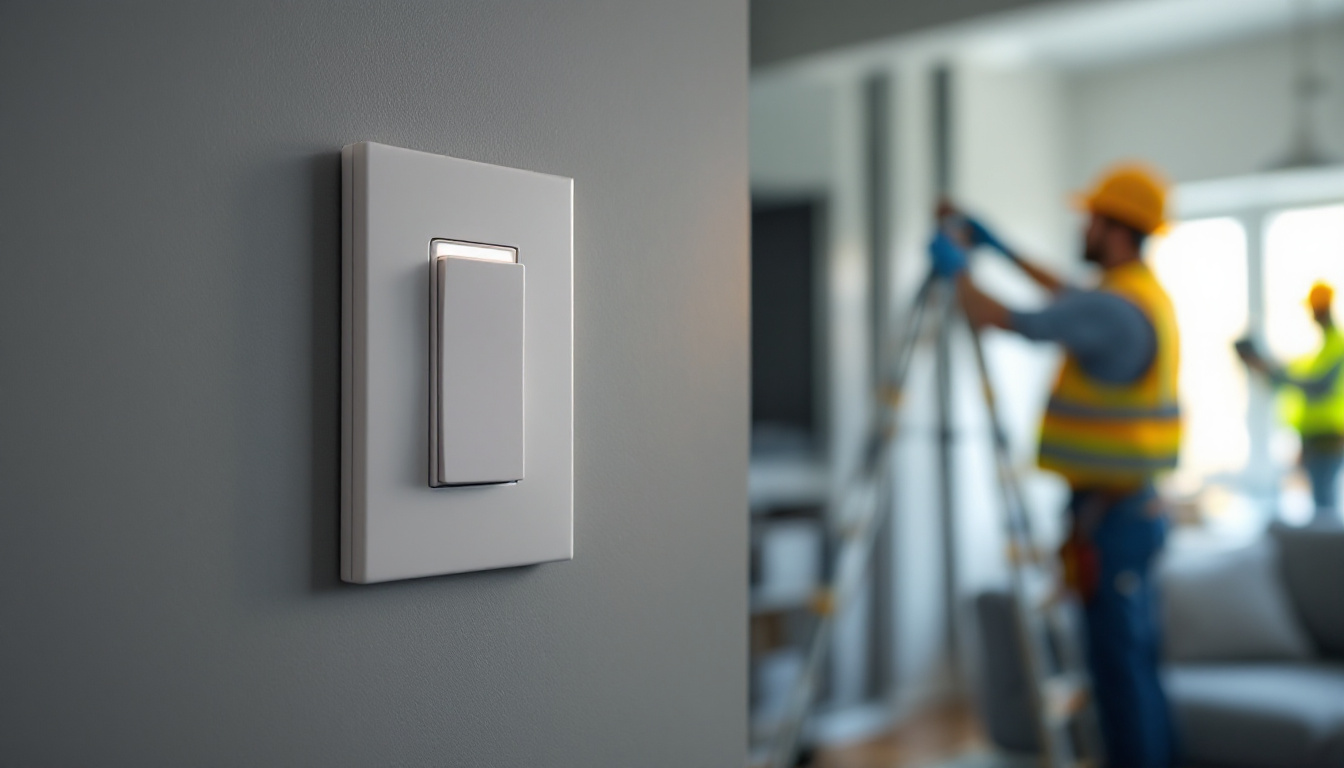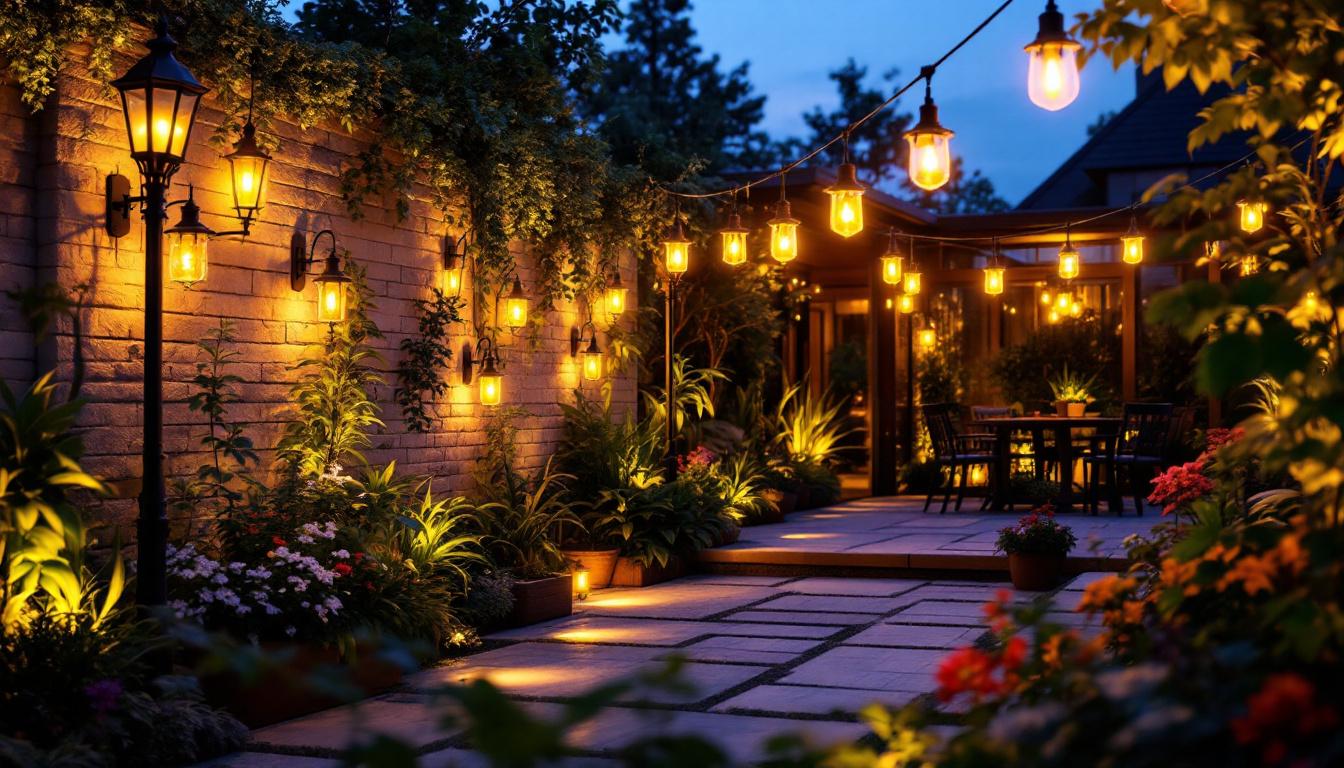
Stair lighting is a crucial element in both residential and commercial spaces, enhancing safety and aesthetics. As a lighting contractor, understanding the nuances of stair lighting can significantly impact the quality of your projects. This checklist will guide you through the essential considerations and steps to ensure optimal stair lighting installations.
Stair lighting serves multiple purposes. Primarily, it enhances safety by illuminating steps, reducing the risk of accidents. In addition to safety, well-designed stair lighting can elevate the overall ambiance of a space, making it more inviting and visually appealing. Understanding these factors is essential for any lighting contractor aiming to deliver high-quality installations.
Safety is the foremost priority when it comes to stair lighting. Poorly lit staircases can lead to slips, trips, and falls, which can have serious consequences. Proper illumination helps guide users safely, especially in dimly lit areas. It is essential to choose lighting solutions that provide adequate brightness without causing glare. Furthermore, integrating motion sensors can enhance safety by automatically illuminating the stairs when someone approaches, ensuring that the path is always visible without the need for manual switches. This feature is particularly beneficial in homes with children or elderly individuals, who may require additional assistance navigating stairs.
Beyond safety, stair lighting can significantly enhance the aesthetic quality of a space. Thoughtfully designed lighting can highlight architectural features, create a sense of depth, and add character to staircases. Whether it’s a sleek modern design or a more traditional look, the right lighting can transform a mundane staircase into a stunning focal point. For instance, using LED strip lights along the edges of each step can create a floating effect, while pendant lights suspended above can add a touch of elegance. Additionally, color temperature plays a crucial role in setting the mood; warmer tones can create a cozy atmosphere, while cooler tones can impart a more contemporary feel. By carefully considering the style and placement of stair lighting, homeowners can achieve a harmonious balance between functionality and design, making their staircases not just a means of transition, but a true work of art within their home.
When planning stair lighting, several factors must be taken into account to achieve the desired outcome. These considerations will help ensure that the lighting is both functional and visually appealing.
There are various types of lighting options available for staircases, including recessed lights, wall sconces, and step lights. Each type has its advantages and can be used in different scenarios. Recessed lights provide a clean look and can be strategically placed to illuminate each step. Wall sconces, on the other hand, can add character and style, while step lights are specifically designed to highlight individual steps. Additionally, LED strip lights can be an innovative choice, allowing for creative designs along the edges of the stairs or even under the handrails, providing a modern touch that enhances safety and aesthetics simultaneously.
Choosing the right brightness level is crucial. Too dim, and the stairs become hazardous; too bright, and the lights can be blinding. A general rule of thumb is to aim for a brightness of around 100 to 200 lumens per step. Additionally, the color temperature of the lights can affect the mood of the space. Warmer tones (2700K to 3000K) create a cozy atmosphere, while cooler tones (4000K and above) offer a more modern and vibrant feel. It’s also worth considering the use of dimmable lights, which allow for flexibility in brightness depending on the time of day or occasion, ensuring that the stairs are always appropriately lit without compromising comfort or safety.
Proper placement and spacing of lights can make a significant difference in effectiveness. Lights should be installed in a way that evenly illuminates the entire staircase. For instance, recessed lights should be spaced adequately to prevent dark spots. A common recommendation is to place lights every 4 to 6 feet, depending on the height and width of the stairs. Moreover, incorporating lighting along the handrails can enhance visibility and safety, especially in homes with children or elderly residents. This additional layer of illumination not only serves a practical purpose but can also create a stunning visual effect, transforming the staircase into a focal point of the home.
Once the planning phase is complete, the next step involves installation. Following best practices during installation can ensure that the stair lighting functions effectively and safely.
Proper wiring is essential for any lighting installation. Ensure that the electrical system can handle the additional load of the stair lights. It’s also important to use appropriate wiring methods to prevent any hazards. For outdoor stair lighting, weather-resistant fixtures and wiring should be used to withstand the elements. Additionally, consider the use of low-voltage lighting systems, which can be safer and more energy-efficient. These systems often require a transformer, but they can significantly reduce the risk of electrical shock and are ideal for outdoor applications where moisture is a concern.
After installation, testing the lights is crucial. Check for any flickering or inconsistent brightness. Adjust the angle of recessed lights if necessary to ensure that they illuminate the steps effectively. It’s also advisable to conduct a final walkthrough with the client to ensure satisfaction with the lighting setup. During this walkthrough, take the opportunity to discuss the various lighting options available, such as motion sensors or dimmers, which can enhance the functionality and ambiance of the stair lighting. Furthermore, consider the impact of surrounding decor and colors; the right lighting can accentuate architectural features and create a welcoming atmosphere, making the stairs not just safe but also visually appealing.
In today’s environmentally conscious world, energy efficiency is a significant consideration for lighting contractors. Implementing sustainable practices not only benefits the environment but can also be a selling point for clients.
LED lights are a popular choice for stair lighting due to their energy efficiency and longevity. They consume significantly less power than traditional incandescent bulbs and have a much longer lifespan, reducing the need for replacements. Additionally, LED lights produce less heat, making them safer for enclosed spaces.
Smart lighting technology is becoming increasingly popular in modern homes and businesses. Integrating smart lighting solutions allows for greater control over stair lighting, including dimming options and scheduling. This not only enhances convenience but also contributes to energy savings by ensuring lights are only on when needed.
Stair lighting design is continually evolving, with new trends emerging that reflect changing aesthetics and technology. Staying informed about these trends can help lighting contractors offer innovative solutions to their clients.
Minimalism remains a strong trend in interior design, and stair lighting is no exception. Clean lines and unobtrusive fixtures are favored, allowing the staircase itself to take center stage. Recessed lighting and hidden fixtures are popular choices that align with this design philosophy.
Accent lighting is another trend gaining traction. This involves using lighting to highlight specific features of the staircase, such as handrails or architectural details. By creating focal points, accent lighting adds depth and interest to the overall design.
Integrated lighting, where the lights are built into the staircase design itself, is becoming increasingly popular. This could include illuminated handrails or light strips along the edges of steps. Such solutions provide seamless illumination while enhancing the overall aesthetic of the staircase.
Proper maintenance is essential to ensure that stair lighting remains functional and visually appealing over time. Regular upkeep can prevent issues and prolong the lifespan of the lighting fixtures.
Dust and dirt can accumulate on lighting fixtures, diminishing their brightness and overall effectiveness. Regular cleaning of fixtures and bulbs is necessary to maintain optimal performance. Use a soft cloth and appropriate cleaning solutions to avoid damaging the fixtures.
Conducting periodic inspections of stair lighting is crucial. Check for any signs of wear or damage, such as flickering lights or burnt-out bulbs. Addressing these issues promptly can prevent further complications and ensure safety.
Educating clients about stair lighting is an essential aspect of a lighting contractor’s role. Clear communication can help clients understand the benefits of various lighting options and make informed decisions.
Take the time to explain the different lighting options available, including their benefits and drawbacks. Providing visual aids, such as samples or design mock-ups, can help clients visualize the final outcome. This transparency builds trust and ensures that clients feel confident in their choices.
It’s also important to discuss maintenance needs with clients. Educate them on how to care for their stair lighting and the importance of regular upkeep. Providing a simple maintenance guide can empower clients to take responsibility for their lighting systems.
Stair lighting is a vital aspect of any lighting project, combining safety, functionality, and aesthetics. By following this comprehensive checklist, lighting contractors can ensure that their installations meet the highest standards. From understanding the importance of stair lighting to considering energy efficiency and design trends, each step contributes to creating a well-lit and inviting space.
As the demand for innovative lighting solutions continues to grow, staying informed and adaptable is key for lighting contractors. By embracing new technologies and design trends, contractors can enhance their offerings and deliver exceptional results to their clients.
Ready to elevate your stair lighting installations with the finest products on the market? Look no further than LumenWholesale, where we provide contractors with high-quality, specification-grade lighting solutions at unbeatable wholesale prices. Our extensive selection is designed to meet the highest industry standards, ensuring you deliver reliable and high-performance lighting for every project. Plus, with free shipping on bulk orders, you can enjoy premium lighting at the best value — without hidden fees or compromises. Don’t let middleman markups dim your project’s potential. Experience the perfect blend of quality, affordability, and convenience. Visit LumenWholesale today for Wholesale Lighting at the Best Value and light up your stairways with confidence and style.

Discover the intricacies of standard light switches from a contractor’s perspective.

Discover how stainless steel light fixtures can boost your lighting contracts with durability, style, and cost savings.

Unlock the secret to securing more lighting contracts with our guide on exterior decorative lighting.

Discover how LED tape is revolutionizing the lighting industry and giving contractors a competitive edge.